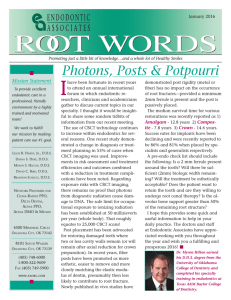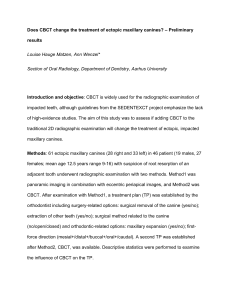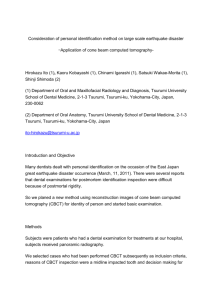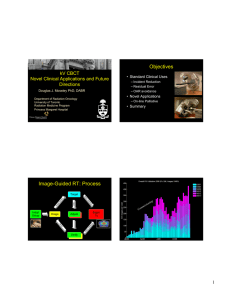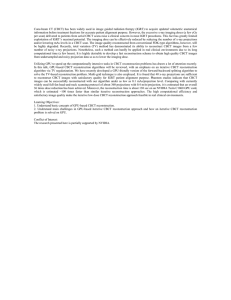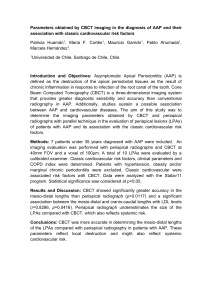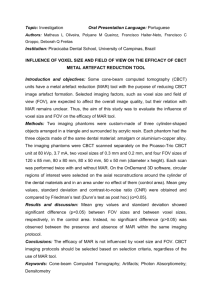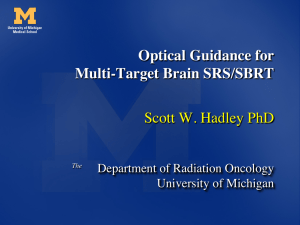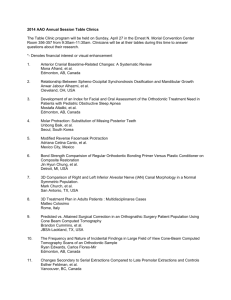Visibility of the mandibular canal through different imaging exams
advertisement
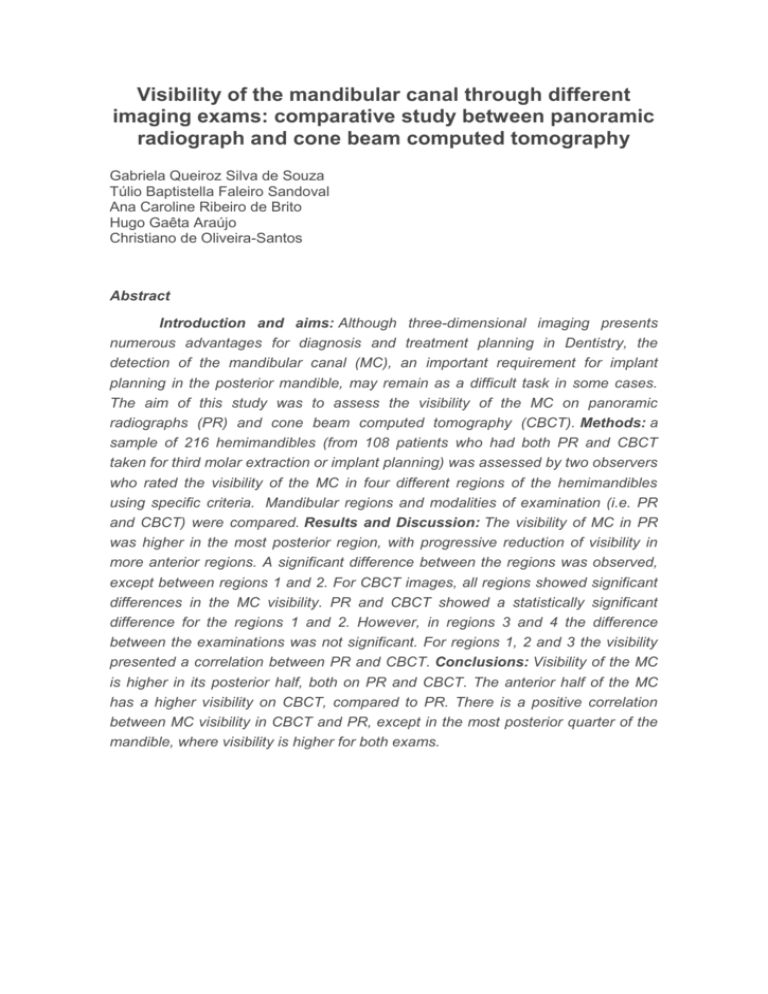
Visibility of the mandibular canal through different imaging exams: comparative study between panoramic radiograph and cone beam computed tomography Gabriela Queiroz Silva de Souza Túlio Baptistella Faleiro Sandoval Ana Caroline Ribeiro de Brito Hugo Gaêta Araújo Christiano de Oliveira-Santos Abstract Introduction and aims: Although three-dimensional imaging presents numerous advantages for diagnosis and treatment planning in Dentistry, the detection of the mandibular canal (MC), an important requirement for implant planning in the posterior mandible, may remain as a difficult task in some cases. The aim of this study was to assess the visibility of the MC on panoramic radiographs (PR) and cone beam computed tomography (CBCT). Methods: a sample of 216 hemimandibles (from 108 patients who had both PR and CBCT taken for third molar extraction or implant planning) was assessed by two observers who rated the visibility of the MC in four different regions of the hemimandibles using specific criteria. Mandibular regions and modalities of examination (i.e. PR and CBCT) were compared. Results and Discussion: The visibility of MC in PR was higher in the most posterior region, with progressive reduction of visibility in more anterior regions. A significant difference between the regions was observed, except between regions 1 and 2. For CBCT images, all regions showed significant differences in the MC visibility. PR and CBCT showed a statistically significant difference for the regions 1 and 2. However, in regions 3 and 4 the difference between the examinations was not significant. For regions 1, 2 and 3 the visibility presented a correlation between PR and CBCT. Conclusions: Visibility of the MC is higher in its posterior half, both on PR and CBCT. The anterior half of the MC has a higher visibility on CBCT, compared to PR. There is a positive correlation between MC visibility in CBCT and PR, except in the most posterior quarter of the mandible, where visibility is higher for both exams.
